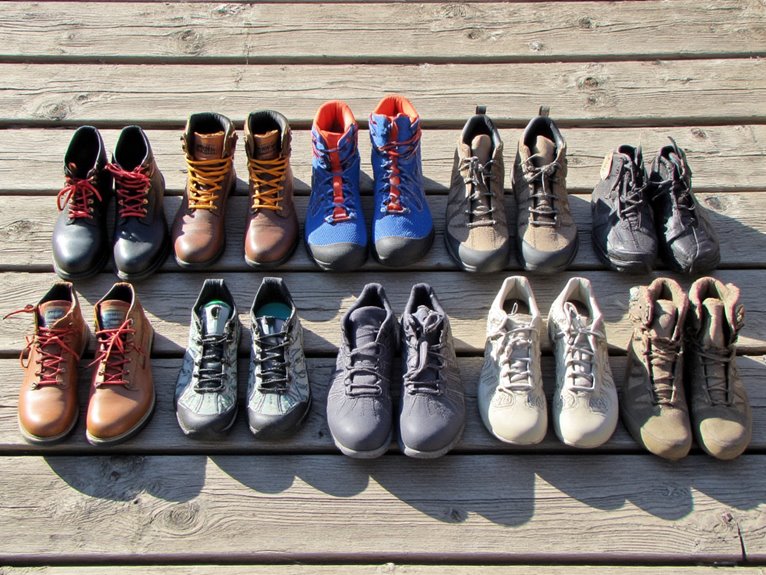Will a Kayak Sink if Filled With Water?
A well-designed and properly maintained kayak will not sink even if filled with water, as its buoyancy is engineered to displace a volume of water equal to the weight of the kayak and its occupants. The hull design, material selection, and density all play critical roles in determining its stability and susceptibility to sinking. While a flooded kayak may lose some buoyancy, a well-engineered hull will maintain a stable and even keel, allowing it to recover and remain afloat. The intricacies of kayak design and buoyancy reveal a more complex story, one that unfolds when we examine the underlying factors that keep kayaks afloat.
We are supported by our audience. When you purchase through links on our site, we may earn an affiliate commission, at no extra cost for you. Learn more. Last update on 7th January 2026 / Images from Amazon Product Advertising API.
Kayak Design and Buoyancy
A kayak's buoyancy is largely determined by its hull design, which is engineered to displace a volume of water equal to the weight of the kayak and its occupants.
This design consideration is critical to ensuring the kayak remains afloat, even when subjected to varying loads and water conditions.
The hull's shape, size, and material selection all contribute to its buoyancy characteristics.
A well-designed kayak will maintain a stable and even keel, even when flooded with water, allowing it to recover and remain buoyant.
Material Density and Displacement
The selection of materials for a kayak's hull is critical, as the density of the material used will directly impact the vessel's displacement and overall buoyancy.
A kayak built with dense materials will displace less water, reducing its buoyancy and increasing the likelihood of sinking. Conversely, a kayak made from lightweight materials will displace more water, increasing its buoyancy.
Density of common kayak materials:
Fiberglass: 1.8-2.2 g/cm³
Kevlar: 1.4-1.6 g/cm³
Polyethylene: 0.92-0.96 g/cm³
Inflatable materials: 0.04-0.12 g/cm³
Wood: 0.5-0.8 g/cm³
Hull Shape and Stability
Beyond material selection, a kayak's hull shape plays a critical role in determining its stability and susceptibility to sinking.
A well-designed hull shape can provide inherent stability, making it more difficult for the kayak to capsize or sink.
A rounded or 'V' shaped hull, for instance, allows the kayak to glide smoothly through the water, dispersing the weight of the kayak and its occupants more evenly.
This design feature helps to reduce the likelihood of the kayak taking on excessive water, which can lead to instability and, ultimately, sinking.
A stable hull shape is essential for maintaining the kayak's buoyancy and ensuring a safe and enjoyable paddling experience.
Water Ingress and Buoyancy Loss
Water ingress, often resulting from compromised hull integrity or inadequate seals, can rapidly lead to buoyancy loss, substantially increasing the risk of a kayak sinking.
When water enters the kayak, it displaces air, reducing the buoyant force that keeps the vessel afloat.
This can occur through various means, including:
- Cracks or holes in the hull
- Loose or damaged hatch covers
- Inadequate sealants or gaskets
- Poorly maintained or damaged scupper plugs
- Insufficient drainage systems
As buoyancy decreases, the kayak's stability and flotation are compromised, making it more susceptible to capsizing or sinking.
To guarantee a safe and enjoyable paddling experience, regular inspections and maintenance of the kayak's hull and seals are crucial to prevent water ingress.
To prevent water ingress and maintain a safe paddling experience, regular inspections and maintenance of the kayak's hull and seals are vital.
Real-World Scenarios and Examples
Kayakers who venture out unprepared often find themselves in precarious situations, as evidenced by the numerous accounts of sinking kayaks reported annually.
A notable example is the case of a solo paddler who set out on a lake without a bilge pump or spare paddle. After a sudden downpour, the kayak took on water, and the paddler was unable to bail it out in time. The kayak eventually sank, leaving the paddler clinging to the hull.
This scenario highlights the importance of proper preparation and safety measures.
In another instance, a group of kayakers ignored warning signs of rough waters and found themselves swamped by a rogue wave, resulting in a total loss of buoyancy.





